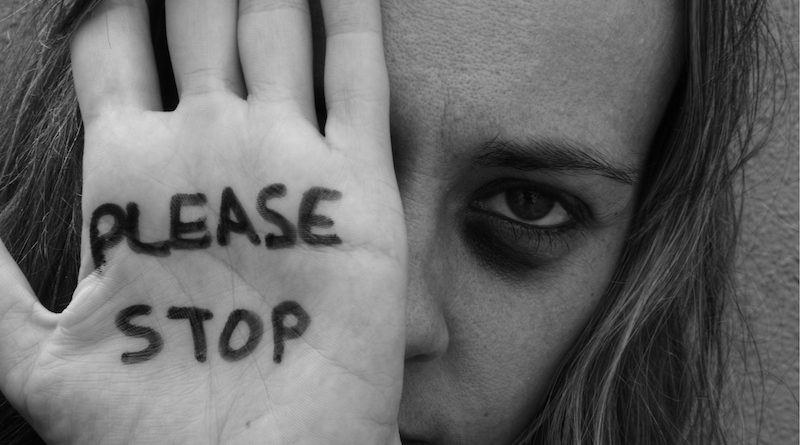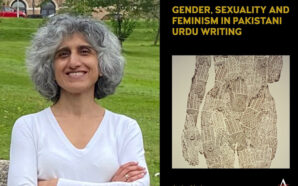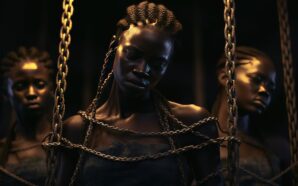Whenever I come across news of a woman being sexually assaulted, or a girl being molested, my mind wanders back into my life as a social science teacher, conducting classes in both cultural anthropology and sociology, among other things.
I remember one sociological reading I assigned to each of my classes every semester – taken from James Henslin’s book “Down to Earth Sociology”, in particular, i.e. “Riding the Bull at Gilley’s: Convicted rapists describe the rewards of rape” by Diana Scully and Joseph Marolla, first published in 1985 in the book “Social Problems” (Vol. 32, No. 3).
Scully and Marolla’s objective in conducting the research was to disprove the prevailing myth that rape is a crime committed by mentally ill men. In writing her “Reflection” after their study was published, Scully said, “When I began my work on rape, the psychopathological model, which assumes that rape is the result of a mental illness and that it often includes an uncontrollable sexual impulse, dominated the field. According to this model, because men who rape cannot control their behavior, they are not responsible for it either. This also was the heyday of victim blaming and the assumption that women consciously or subconsciously precipitate, and consequently are the ones who are really responsible for, rape. Thus, much of the psychiatric literature focused on the behavior and motives of women and even girls rather than men.”
Culture defines the ways by which we assume our roles in society; the manner by which we are born, who handles or manages the birthing process, who raises us, what defines family and gender roles, how we learn or get educated, what we believe in or our world view or religion, whom we can and cannot marry, the rules and the taboos – prescriptions and proscriptions, the laws of the land and the prevailing morality, etc.; in short, culture is so deeply ingrained in us that it inevitably influences how we think, behave and become.
In the course of their study involving American men incarcerated for the crime of rape, and who volunteered for the study, Scully and Marolla identified a list of so-called “rewards” the sample group of men experienced based on their accounts of the assault. These were: revenge and punishment, i.e., revenge rapes as collective punishment for the woman or women the rapist has issues with; an added bonus when rape is committed as an incident related to another (main) crime such as breaking into a home or robbery; sexual access, i.e. men resort to rape when they have no legitimate access to it; impersonal sex and power whereby the perpetrator views rape as a way to get sex without commitment and subjects the victim to humiliating acts thereby imposing his will upon her; and recreation and adventure which is mostly related to gang rapists and more youthful offenders prone thrill-seeking and peer pressure.
In effect, the study appears to support the theory that society also has a responsibility in the act of rape by perpetuating a ”rape culture”.
But what is this “rape culture”?
The keyword here is, of course, “culture.”
Culture defines the ways by which we assume our roles in society; the manner by which we are born, who handles or manages the birthing process, who raises us, what defines family and gender roles, how we learn or get educated, what we believe in or our world view or religion, whom we can and cannot marry, the rules and the taboos – prescriptions and proscriptions, the laws of the land and the prevailing morality, etc.; in short, culture is so deeply ingrained in us that it inevitably influences how we think, behave and become.
But since there is what we call cultural variation – what is wrong behavior in one society may be acceptable or considered a neutral act in another – people, quite understandably, do exhibit cultural differences.
The term “rape culture”, however, is a relatively more recently coined term – an outcome of the second wave of feminism in America in the 1970s. The documentary film “Rape Culture”, produced and directed by Margaret Lazarus and Renner Wunderlich in 1975, is credited for being the first vehicle of expression firmly defining the concept itself; that is, the cultural normalization of the rape of both men and women.
Based on this concept, rape can, then, only be eliminated through a revolutionary social transformation.
Rape through myth and history
Do you remember your mythology?
In Greek mythology, Leda, the wife of King Tyndareus of Sparta, and mother to Helen of Troy, Clytemnestra (wife of Agamemnon), and Castor and Pollux, was raped by Zeus disguised as a swan. The Gorgon Medusa portrayed by the poet Ovid as having once been a ravishingly beautiful maiden was raped by Poseidon, and then turned into the monster she became by Athena. “The Rape of the Sabine Women” is another popular legend associated with the founding of Rome.
How about your world history classes, especially the raids and the wars?
While considered a morally deplorable and depraved act in most societies, rape has been chronicled to have taken place in all the major wars and invasions dating back from antiquity (e.g. Greek and Roman invasions), the Middle Ages (e.g. the Vikings, Arab slave trade and the Mongol Empire), the period of European conquest and colonization, up to the present, including the First World War and the Second World War, as well as numerous civil wars and armed conflicts such as the Bangladesh Liberation War (1971), El Salvador (1980s), Sarajevo (1990s), Sri Lankan Civil War (1990s), the Rwandan genocide (1994), Darfur in Sudan (early 2000s), Iraq War (early 2000s), the Democratic Republic of Congo (2010), and the Libyan Civil War (2011), and other acts of violence and force such as piracy, mass abductions and kidnappings.
The role of mass media
If you are a fan of movies like “Braveheart” as well as a host of other war-themed or crime-related films, it does not take much imagination to become familiar with the profound horrors of rape – for both men and women victims, and the satisfaction (which may or may not be sexual in nature) it gives the perpetrator/s. Even current popular TV series like “A Game of Thrones” and “Outlander” are rife with rape scenes involving both minor and major characters.
In Greek mythology, Leda, the wife of King Tyndareus of Sparta, and mother to Helen of Troy, Clytemnestra (wife of Agamemnon), and Castor and Pollux, was raped by Zeus disguised as a swan. The Gorgon Medusa portrayed by the poet Ovid as having once been a ravishingly beautiful maiden was raped by Poseidon, and then turned into the monster she became by Athena. “The Rape of the Sabine Women” is another popular legend associated with the founding of Rome.
In the study “The Effects of Mass Media Exposure on Acceptance of Violence against Women: A Field Experiment” (1981), by Neil M. Malamuth and James V.P. Check, “The results indicated that exposure to the films portraying violent sexuality increased male subjects’ acceptance of interpersonal violence against women. A similar non-significant trend was found on acceptance of rape myths. For females, there were non-significant tendencies in the opposite direction, with women exposed to the violent-sexual films tending to be less accepting of interpersonal violence and of rape myths than control subjects.”
In general, violence in media portrayals of women, especially pornography, has been linked to the way society, men in particular, is desensitized to acts of violence against women and get conditioned to commit certain violent acts themselves.
Later studies, however, reveal that subjects who have committed sexual offenses are sometimes sexually repressed and usually exposed to pornography at a later stage in life, as opposed to those exposed to pornography early on but who are able to clearly distinguish fantasy from reality. This is not to say, however, that such studies prescribe or support the distribution and consumption of pornographic materials.
Violence in media portrayals of women, especially pornography, has been linked to the way society, men in particular, is desensitized to acts of violence against women and get conditioned to commit certain violent acts themselves.
Social media channels such as Facebook and Twitter have become vehicles for sharing the unpleasant experience and shaming both victims and offenders. One such example was the Ohio case in 2013 where the reaction of the offenders during sentencing got more media attention (especially from CNN) and sympathy. The judge found the defendants guilty of rape and more: “Trent Mays and Ma’lik Richmond, two Steubenville high school football players, guilty of raping an inebriated 16-year-old teenager on August 12, 2012, and spreading pornographic photographs and videos of the unconscious girl around Facebook, Twitter, and other social media sites” (Mass Media and Rape Culture in America, Melissa Pavlik, 2013).
The sharing of short video clips on social media showing drunk women in bars being molested and acting uninhibitedly trivializes the effect of both male and female behaviors on the actors themselves and the audience in such contexts. If a woman (mis)behaves or dresses provocatively, is this sufficient cause or provocation for forced sex (rape)?
Who gets raped?
“So, if something bad happened, it must be because the victim either did something bad and deserved it, or they were just plain stupid. Sadly, the authors point out, not only do the non-victims hold to this self-deceptive strategy, even victims often cling to that worldview which now says, ‘Something bad happened to you. Therefore, you are either bad, or you were stupid.’ As victims, we find the world would rather disbelieve us or blame us, and all too often we blame ourselves. Which is why George Will’s article was so deceptively destructive. It presented what seemed to be rational concerns that played right into our predisposition to blame and discredit the victims,” says Dixie Gillaspie in her article “Profile of a Rape Victim – It’s Not What You Expect” (2014) where she talks about rape victims’ perceptions, both male and female.
It is a truism, though, that the reported victims of rape on both national and global levels are disproportionately female; that rape usually goes on undetected and unreported, especially marital rape. It is also true that offenders are usually part of the victim’s familiars – acquaintances, neighbors, friends and family members / relatives.
One can get raped whether scantily clad or covered up, fitting or not fitting a society’s standards of beauty, young (or even very young) or old (or very old), illiterate or highly educated and everyone else in between – it doesn’t matter what your ethnicity is, your creed, your health or social status, everyone is a potential assault or rape victim.
The famous mechanical bull at Gilley’s Saloon in Dallas, Texas (formerly in Pasadena) gives the rider an 8-second challenge to stay on the bull. A lot of people get thrown off in the first instance, and the few who make it through the wild 8-second ride get off the bull with a feeling of victory and exhilaration.
Based on the title of Scully and Marolla’s study, rape is likened to riding the Gilley’s mechanical bull and succeeding, where the rapist finishes the heinous act feeling empowered and victorious.
It must be noted that while Diana Scully was a rape victim herself, she knew that, as a researcher, she could not walk around acting like “the victim”. In her paper titled “Reflection”, Scully states, “At some point, I stopped speaking publicly as a victim because I was no longer effective in that role. In fact, my work as a feminist scholar on a topic of deep personal significance healed me and restored my sense of personal power—the thing that is taken from women when they are raped. It is important for raped women to know that despite what the medical model predicts, it is possible to emerge from rape an even stronger woman than you were before.”
Do you know anyone who has been raped and kept silent?
Perhaps it is time to speak up.
About the writer
Claire Dangalan is a Filipina freelance feature writer (a.k.a. Lovely Claire Cachuela) based in Dubai. She is a consummate lover of the arts, especially literature. She taught Cultural Anthropology, Sociology, Humanities and Literature back in the Philippines. Her interests, aside from writing, include the environment, health and fitness, culinary arts, social issues, studies on world view, and “unprofessional photography.”
To connect or read more from Claire:
Blog: Faeriequeenbuknoy
Blog: Enthymememy
Facebook: Reduce your CO2 footprint
Twitter: Alice Red Queen
Twitter: Red CO2 Footprint












